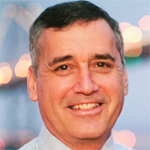The egalitarian view extends to collaborations with colleagues, says Dr. Haavardsholm. Dr. Kvien “is very passionate that we should not sit in our own department and hold onto our own data—we should seek opportunities to collaborate with other groups, especially research groups that are at a higher international level.” Dr. Mjaavatten adds: “He’s not been reluctant to collaborate with people or groups who are more accomplished in certain research fields than we are, because that’s the way you improve. And of course, collaboration has also been necessary, coming from a small country like Norway. But he is very welcoming of all kinds of ideas.”
Career Timeline
1974 – Earns his MD from Oslo University
1978 – Completes a residency at Sørlandet Rheumatism Hospital
1982 – Completes a residency at Oslo Sanitetsforening Rheumatism Hospital
1984 – Completes cardiology residency at Rikshospitalet, The National Hospital
1986 – Completes neurology and nephrology residencies at Ullevål University Hospital
1986 – Earns his PhD from Oslo University
1986 – Becomes consultant rheumatologist at Diakonhjemmet Hospital
1994 – Becomes head of rheumatology at Diakonhjemmet Hospital
2005 – Serves as president of EULAR
2008 – Becomes editor of the Annals of the Rheumatic Diseases
Looking Forward
Currently, Dr. Kvien nurtures his own research interests, which include longitudinal studies on RA in Oslo, focusing on health status measures, osteoporosis, and other disease manifestations; early arthritis and predictors of long-term outcomes; health service research; biomarkers and imaging modalities; and patient perspectives in outcomes research (activity in OMERACT has been part of this interest). In the latter work, his wife Turid Heiberg has also been an active collaborator and contributor to the research. “I have also been fortunate to work together with my wife in research activities,” he says. “We have traveled together to many meetings around the world.”
When asked about the progress and future challenges for his field, Dr. Kvien applauded the huge developments in understanding inflammatory joint disease mechanisms and individualization of treatments, as well as access to new drug therapies. It’s now time, he says, to “make those same steps in the right direction with degenerative joint diseases as we have done with the inflammatory joint diseases. In osteoarthritis, we are many years behind.” And yet, he remains optimistic: “I see more opportunities than I see threats.” That kind of statement is emblematic of Dr. Kvien, says Dr. Haugeberg: “He always looks at opportunities, and not limitations. The word ‘problem’ does not exist for him.” To address the challenges in osteoarthritis, Dr. Kvien’s group also started a longitudinal study of hand osteoarthritis about seven years ago. “Osteoarthritis is a field where we will see an increasing focus from our group in the coming years,” he predicts.

